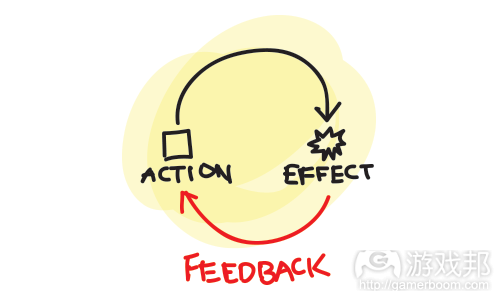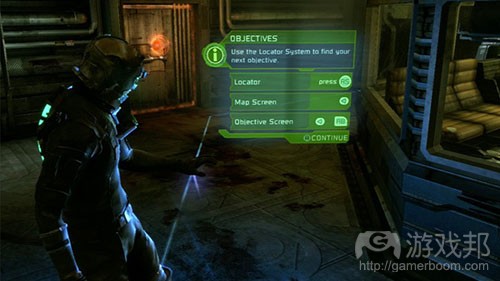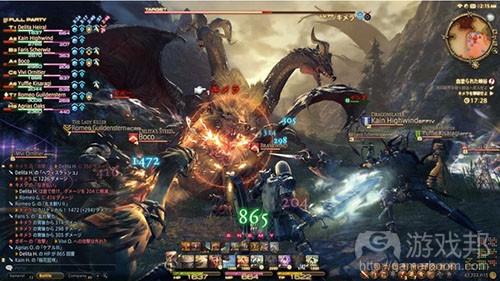习惯养成是长期留存用户的关键
作者:Nathan Lovato
亚里士多德曾说“我们是由自己反复做的事情造就的。”换句话说,我们人类就是由自己的习惯铸就的。
我们每个人都有许多习惯,例如一醒来就到厨房里冲咖啡,或者在上班前登录自己喜爱的MMO游戏。
习惯是一种机械性的行为。习惯于重返游戏的玩家很可能就是不断回头的客人。这也正是为何习惯养成,处理习惯的过程是长期留存用户的关键。
在进入游戏与习惯性信息相关的具体说明之前,让我们先来了解一下习惯的心理学原理。
习惯是什么?
根据维基百科的解释,“习惯是一种经常重复并且在潜意识情况下发生的惯性行为。”换句话说,它是一种我们几乎不需要思考就能重复的行为模式。比如我们过马路时要先看看左右两边的情况。
习惯可以培养。我们必须以足够多的时间和频率有意识地重复一个过程才能令其变成一种自发行为。你的玩家亦是如此。
更具体地说,习惯是由一个提示(信号),一个日常程序(或自发反应)组成的。无论提示如何出现都能够触发日常程序。
(习惯循环。有无奖励均可,但有奖励更有利于培养习惯。)
我们自身都有不少根深蒂固的习惯。例如每天早上我醒来的时候(提示),就会打开窗户(日常程序)。当我开启电脑(提示)之时,总会先查看我的信息(日常程序)。习惯就像游戏开发过程中的“if”条件一样具有机械性。
现在习惯构造就是习惯养成的一个过程。也就是创造提示和日常程序之间连系的循环。
培养一个新习惯究竟需要多长时间?
2009年有份研究报告显示,完全培养一个习惯所需时间不尽相同。该研究让参与者在18至254一时间中培养一项自发性的反射行为。这对应的是他们何时到达自律性的节点,即他们完成培养了某一习惯的节点。平均来看,参与者要历时66天才能培养一个新习惯。这个结果与我们在网络上看到的21天习惯培养法则截然不同。
也就是说,今天我们还没有培养玩家习惯所需时间的标准科学答案。这意味着我们没有准确的根据来了解玩家何时已陷入玩游戏的习惯。但我们却能知道,重复可以让某一行为具有自发性。早期的持续重复可以强化这一行为。
简单的习惯可以在数天内就形成。任何极易执行并且具有奖励性的事情都会很快转变成一种习惯。这通常是我们容易跌入的陷阱:你很容易在刚打开浏览器的时候查看自己的Twitter或Facebook状态。我们打开食橱拿块巧克力塞进嘴里也同样是毫不费力之举!但这两种行为都不健康。
游戏极擅长让玩家的行为显得富有回报感,因此也能够强化一种新习惯的形成。另一种极为有效的手法就是在已经成形的习惯之上培养新习惯。
有效的习惯养成
我们已经知道习惯是由提示和日常程序组成。为了推动习惯成形,我们会创造多种习惯之间的联系。我们要让日常程序变成新的提示。让我们以一个举子来说明:
*你看到智能手机上的推送通知。这是一种提示。
*你查看推送通知。这是日常程序,但也是一种提示。
*你点击《Candy Crush》的通知并开始玩游戏。这是基于查看推送通知这一习惯的一种新日常程序。
这些习惯类型很快成形,因为他们扩展了已经确立的机制。
如果你想让用户养成玩游戏的习惯,就得从提示和日常程序的角度重新思考自己的设计。用游戏设计术语来说,这对应的是反馈循环的概念。
反馈循环
在电子游戏中,反馈循环的原理如下:
1.玩家对游戏系统及自己的短期目标有一个心理表征。
2.玩家采取一系列行动(摁压按钮)。
3.游戏系统根据自身规则响应玩家的输入行为。
4.游戏向玩家发送反馈(如动画,AI反应,积分等)
5.玩家处理这种反馈并更新自己在游戏中的资产。游戏又开始一轮循环了!
总而言之,循环反馈的概念意味着玩家采取行动,游戏作出回应。游戏以持续性的方式如是反复。这正是你插入提示的切入点,这样才能触发玩家的日常程序。
所以反馈循环一般始于来自游戏的提示,而提示又触发了玩家的反应或日常程序。游戏回应日常程序,并自我更新为玩家提供新提示。例如:
1.屏幕上出现怪物。这是一个提示。
2.玩家攻击怪物直到它死为止。这是日常程序。
3.游戏呈现怪物的死亡动画。地上出现一个小箱子。这是一个新提示。
习惯养成的3个秘诀
据Susan Weinschenk博士(《100 Things Every Designer Needs To Know About People》作者)曾指出,培养新习惯需要3个技巧:
1.将用户所需处理的事情分解成更小的步骤
2.消除用户所需制定的决策
3.向用户呈现其持续进步的状态和积极反馈
换句话说,培养有效的游戏习惯关键在于短期反馈循环。优秀的游戏通常很擅长培养习惯。游戏化概念在今天如此盛行,就是因为它能够加快和强化任何应用的反馈循环。
所以你首先得分解玩家行动的步骤。这可以用多种方式来实现。在AAA和休闲游戏中,这些步骤清晰明了并且是逐个向玩家呈现。
(许多游戏使用文本或GUI动画方便玩家在游戏早期操作日常程序)
游戏经常邀请玩家不断重复相同的步骤,所以当玩家了解游戏规则后,他们就知道要怎么做了。对于街机游戏来说尤其如此。其他游戏会使用任务系统给予玩家一系列极为明确的短期目标。这也有利于减少玩家所需制定的决策。
例如在MMO游戏中,NPC会告诉你“杀死3只小鸡,把它们的肉带回来。”在魔兽中,地图会让你知道到哪去找小鸡。玩家就知道要怎么做,要去哪里……以及他们会得到什么回报!玩家在游戏中完成任务就有明确的回报。除此之外,游戏在玩家获得经验值或无成每个次级目标的时候,都会给予提示让他们知道自己的进度!积分及其他动画GUI元素也会提供富有价值的持续反馈!
这正是成功的休闲游戏能够留存大量用户的原因。
这有点像是在控制玩家。你可能会问,玩家并不喜欢被控制呀。
但实际上,如果你想让毫无经验的用户掌握游戏运行方式,最好不要给予他们完全的自由。你想培养的每个用户习惯都是基于能够触发玩家日常程序的一个独特提示。这个提示在习惯开始成形之前要多次出现。
随着玩家对游戏的深入了解,他们也将更加需要自由体验的空间。他们将能够更好地应对游戏挑战。但这通常始于游戏习惯开始成形之后。比如MMORPG玩家在游戏后期就会更想参与复杂的突袭任务。
另外,你想强化的习惯也并不仅仅源自你的游戏!要知道有些玩家习惯并不一定是我们项目的专利。《暗黑破坏神》玩家也可能毫无障碍地体验《流放之路》,因为这两款游戏有许多共性。要记住我们也要考虑到这些玩家的习惯。例如,《暗黑破坏神3》刚开始对于许多砍杀型玩家来说是一个很令人抓狂的过程,因为游戏迫使他们经历许多标准困难模式。
为了更好地了解我们该如何驾驭习惯的力量,让我们以一款游戏举例说明。
你可以拿任何一款成功的多人模式或社交游戏进行研究,看看它们如何培养玩家习惯。我们知道,习惯成形与游戏核心的反馈循环渊源颇深。任何优秀的游戏设计都会激发新习惯的成形。我们都愿意反复玩一款极具娱乐性的游戏。但我们仍然有可能培养出坏习惯或无法强化已经成形的习惯。
案例研究:《最终幻想14:重生之境》
长期来看,MMORPG的生存很大程度上取决于庞大的活跃和资深用户社区。为此,它们必须构成强大的玩法习惯。《最终幻想14》就是这种典型。它是一款相当新颖的MMO,拥有庞大而忠实的用户。这也正是我们选择它进行分析的原因。
游戏最初是让玩家创建自己的虚拟角色。此时,游戏是用其精致的美术设计吸引玩家眼球。其角色创建菜单进行了高度优化,并且融入了游戏世界。创建角色之后,每个玩家都会进入教程阶段,由此进入Eorzea世界。
游戏的首批任务类似于魔兽,提供了让玩家进入某个区域的任务。这些任务不但提供了简小而明确的短期目标,它们还后续创造了通过每个区域的明确路径。程序生成事件为玩家原来的线性路径增添了一些变化。
游戏围绕其核心玩法设置了许多任务。这有利于强化玩家机制,令Eorzea世界显得更为丰富。玩家所从事的每项活动或操作都有其自身奖励:经验点数,金钱或道具等。
游戏提供了一个名为“命令”的日常任务系统及其快速升级的奖励。游戏鼓励玩家体验不同的职业,玩家可以只用一个角色完成所有升级。《最终幻想14》是少数迫使玩家穿过其地下城的游戏之一。如果你想进入游戏核心,就必须完成清除地下城和boss这个强制性任务。这要求每位玩家至少都要理解基本的组队玩法,并在最终做好组队游戏的准备。而这一点又有利于提升整个玩家社区。游戏还为玩家提供了长期或短期回合的选择。
总体来说,这款游戏提供了经典而出色的MMO体验。它与许多优秀的现代MMORPG一样,提供短小而明确的反馈循环。除此之外,游戏还通过提供围绕其核心机制而设计的大量内容培养强大的玩法习惯。
关于道德性的思考
我们是借用户心理来设计游戏,必须谨慎对待我们设计选择中的道德操守。培养具有创造性的长期习惯与鼓励成瘾性之间具有微妙的界线。我们要正视游戏天生具有成瘾性这一现实,它们极易满足我们对积极反馈的需求。
长期留存并不仅仅依赖习惯养成。它来自健康的习惯培养。我们希望用户以积极的方式重返游戏,想让用户拥有愉悦的体验。但游戏成瘾的玩家却并不会获得这种体验。
总结
让我们的玩家养成重返游戏的习惯是打造一个强大社区的必要之举。为了推进习惯养成,我们可以让游戏玩法循环关注以下两个特点,并以此创建早期游戏内容:
1.给予玩家明确的遵循步骤。
2.给予玩家短小的遵循步骤。
我们要用积分,经验值,奖励或游戏内动画等形式为玩家提供持续的反馈。(本文由游戏邦编译,转载请注明来源,或咨询微信zhengjintiao)
Why habit formation is the key to long term retention
by Nathan Lovato
This tutorial was originally published on the GameAnalytics blog
“We are what we repeatedly do”, said Aristotle. In other words, we human beings are shaped by our habits.
Each and every one of us has hundreds of habits. Be it heading to the kitchen as soon as we wake up to make some coffee… or logging onto our preferred MMO to tackle our dailies before work.
As you know, habits are mechanical. A player who gets used to coming back to your game will most likely keep coming back to your game. It is that simple. And that’s why habit formation, the process of creating habits, is the key to long term retention.
Before we jump onto the specifics of habit formation as far as games are concerned, let us take some time to better understand the psychology of habits.
What are habits?
“A habit is a routine of behavior that is repeated regularly and tends to occur unconsciously” (Wikipedia). In other words, it is a pattern of behaviors we repeat almost without even thinking about it. Like looking both ways before we cross the street.
A habit is acquired. We have to consciously repeat a process enough times and with a certain frequency before it becomes automatic. So do your players.
To be a bit more specific, habits are formed of a cue (a signal), and a routine (or automatic response). Whenever the cue comes up, the routine is being triggered.
The habit loop. The reward is optional (or it can be intrinsic), although it makes it easier to establish the habit.
We all have hundreds of those habits engrained in ourselves. For example every morning, when I wake up (the cue), I open the shutters (the routine). When I start the computer (the cue), I always check my messages first (the routine). Habits are about as mechanical as “if” statements in game development.
On a side-note, if you ever wondered why behavior trees work so well for game AIs: we do behave in such a procedural way ourselves. To a certain extent at least.
Now habit formation simply is the process by which habits are formed. That is to say the loop that is going to create a link between a cue and a routine.
How long does it take exactly for a new habit to form?
A report from Lally and al. released in 2009 shows that the time it takes for a habit to fully form can vary tremendously. In their study, it took from 18 to 254 days for the participants to develop an automatic reflex. This corresponds to the point when they reached their asymptote of automaticity: the point beyond which a habit has fully developed. On average, it took the participants 66 days to get into a new established habit. This is quite different from the empirical 21 days rule we can see shared around the internet!
To say the least, there is no scientific consensus today on the time it takes for habits to form. This means that we have no definitive rule of thumb to know when our players fell into a playing habit. What we do know however, is that a behavior becomes automatic through repetitions. And it seems that insisting on repetitions early reinforces the behavior much faster.
Simple habits can start to be formed in a matter of days. Everything that is very easy to do and naturally rewarding will soon turn into a habit. This is often a trap for us: it is very easy to check your Twitter or Facebook whenever you open your browser. It is both effortless and pleasant to open the cupboard and grab a piece of chocolate! But neither is a healthy habit.
Games are good at making actions feel rewarding, thus at reinforcing the creation of new habits. But this is not all. Another very efficient way to get into new habits is to build them on top of existing ones.
Efficient habit formation.
We have seen that habits are made up of a cue and a routine. In order to facilitate their formation, we want to create a link between multiple habits. We want routines to become new cues. Let me clarify that with an example:
You see that you have notifications on your smartphone. That’s a cue.
You check your notifications and read through them. That’s a routine. But that’s also a cue!
You click on your Candy Crush notification and play a quick game. That’s a new routine based on your habit of checking notifications.
Those types of habits form fast, as they extend established mechanisms.
If you want your users to get into a habit of playing your game, you have to rethink your design under the lens of cues and routines. In game design terms, this corresponds to the concept of feedback loop.
The feedback loop.
In video games, a feedback loop works as such:
The player has a mental representation of your game’s system and of their short-term goal.
He acts in consequence (presses a button…).
The game’s system treats the input based on its rule set.
It sends some feedback to the player (animation, reaction from the ai, score bonus…).
The player processes this feedback and update their representation of the estate in the game. And the loop starts again!
But to sum it up, the concept of feedback loop just means that the player acts, and the game reacts. Over, and over, and over again, in a continuous way. This is where you are going to put your cues, in order to eventually trigger a routine from the player.
A diagram of the simple feedback loop
So the feedback loop generally starts with a cue that comes from the game, which triggers a response or routine from the player. The game treats that routine, and updates itself to provide the player with new cues. Here’s an example:
A monster appears on the screen. That’s a cue.
The player attacks the monster until it dies. That’s a routine.
The game shows the monster’s death animation. A little chest appears on the ground. That’s a new cue.
The loop goes on, and on…
The 3 secrets of habit formation.
According to Susan Weinschenk, Ph.D. (author of the handy book 100 Things Every Designer Needs To Know About People), there are 3 techniques to facilitate the formation of new habits:
Break the steps the user has to take into tiny chunks.
Eliminate the need to take decisions.
Show them their continuous progress and positive feedback.
In other words, the secrets of efficient habit formation in games boils down to a short feedback loop. Good games are naturally good at enhancing habit formation. If gamification is so popular nowadays, it is because it has the power to both speed up and strengthen the feedback loop of any application.
So first of all, you want to break down the steps the player has to take. This can be done in many ways. In both AAA and casual games, those steps are shown explicitly and given to the player one by one.
Many games use text or GUI animations (i.e. a touching finger) to give the player routines to follow in the early game.
A game often invites the player to repeat the same steps over and over, so once the player knows its rule-set, he also knows what to do. This is true for arcade games in particular. Other games give the player sets of very clear short-term goals using quest systems. This also has the advantage of eliminating the need for the user to take decisions.
Diablo 3, a bit like World of Warcraft, gives you clear short term goals and a linear path to follow at first
For instance, in an MMO, an NPC will tell you something like: “kill 3 chickens and bring me back their meat”. In World of Warcraft, the map would even tell you where to find the chickens exactly. The player knows what to do, where to go… and what he will get in exchange! There is a clear reward that’s being offered in exchange for completing the task. On top of that, gaining experience points or clearing each sub-objective give the player hints about his progress! Score, combos, and other animated GUI elements also offer valuable, continuous feedback.
That is how successful casual games operate and retain large amounts of players.
It feels a bit like controlling the player. Don’t users crave for control, may you ask?
We may think that they do. But not really. Well, at first at least, they likely won’t! If you want unexperienced users to learn how your game works, it will generally be counter-productive to give them complete freedom. Every habit you want encourage will be based on a unique cue that will eventually trigger a routine from the player. This cue has to come up with a number of times before the habit starts to form.
Eventually though, as they get to know your game better, your players will appreciate more and more room to experiment freely. They will get better at processing everything the game will throw at them. But that is often after the playing habit has started to form. In practice, this is for example the player of an MMORPG who wants to do complex raids in the end game.
And by the way, the habits you are looking to reinforce won’t necessarily be formed thanks to your game only! We have to keep in mind that some of the player’s habits are not necessarily specific to our projects. A Diablo player will have no trouble jumping onto Path of Exile for instance, as both title share many similarities. This is important to note as we have to take those players in account as well. I.e. Diablo 3 felt frustrating at first for many Hack and Slash players as they were forced to go through the normal difficulty mode.
In order to get a better understand of how we can harness the power of habits in practice, let’s take a look at a game that works well.
You could take any successful multiplayer or social game to study how they make the formation of habits possible. As we have seen, habit formation is strongly linked to your feedback loops, which lie at the core of all games. Any good game design stimulates the formation of new habits. We are likely going to play an entertaining game again and again! But we can still encourage the wrong habits or failed to reinforce existing ones.
Case study: Final Fantasy XIV
In the long run, the survivability of an MMORPG relies hugely on having a large community of both active and experienced users. Because of that, they need to build strong playing habits. Final Fantasy XIV managed to do just that. It is a pretty fresh MMO that built both a large and a faithful audience. That is why we are going to take a look at it right now.
The first moments of the game are spent creating your avatar. At that point, the game catches the player’s attention thanks to its fine art direction. The character creation menu is highly polished and anchored in the game world already (with its lovely ethereal visual effects). Past the character creation, each player goes through a tutorial phase that will introduce him to the world of Eorzea.
Fast-forward to the first quests. A bit like World of Warcraft, Final Fantasy 14 provides the player with quests that will lead him through an area. Not only do quests provide the player with small, explicit short-term goals, but their succession create a clear path through each zone. Procedural events breathe some variation into the linear path the player is given.
The game is filled with activities that all revolve around its core gameplay. This helps to reinforce the player’s mechanics and to make the world of Eorzea feel rich. Each activity or action the player takes comes with its own reward: experience points, money, items, etc.
The game offers a system of daily quests called “mandates”. They offer bonus rewards that are pretty handy to quickly level up in crafting jobs. The game encourages you to experiment with classes as you can level them up all with a single character. Final Fantasy XIV is one of the few MMOs that force you to run through its dungeons. Clearing dungeons and bosses is mandatory if you want to progress into the main story. This forces every player to get at least a basic understanding of team play, and prepares them for the end game. Which in turn helps to improve the whole community. Last but not least, the game gives you the option to play in short or long sessions.
All in all, Final Fantasy XIV offers a pretty classic MMO experience, but a polished one. There is nothing extraordinary in that short case study. But we can note that Final Fantasy XIV, like most good modern MMORPGs, offers a short and clear feedback loop. Not only that, but the game encourages the formation of strong playing habits by offering a lot of content that revolves for the most part around its core mechanics.
A quick note on Ethics
As we designers play with the psychology of our users, we do have to be careful with the ethics of our design choices. There is a fine line between encouraging the creation of lasting habits and encouraging addiction. Let us face it: games are addictive by nature. They easily fulfil our need for positive feedback.
Long-term retention does not only rely on habit formation. It relies on healthy habit formation. We want our users to keep coming back to the game in a positive way. We want our users to have a pleasant experience. Addicted players don’t.
Summary
To sum this article up, getting our players into a habit of coming back to our game is necessary to build a lasting community. To facilitate habit formation, we can build our early game around gameplay loops that focus on 2 characteristics:
Giving the player clear steps to follow.
Giving the player small steps to follow.
All we have left is to provide the player with continuous feedback in the form of score, experience points, rewards, or in-game animations.(source:gamasutra)
上一篇:开发者如何增加项目的成功率?











































 闽公网安备35020302001549号
闽公网安备35020302001549号